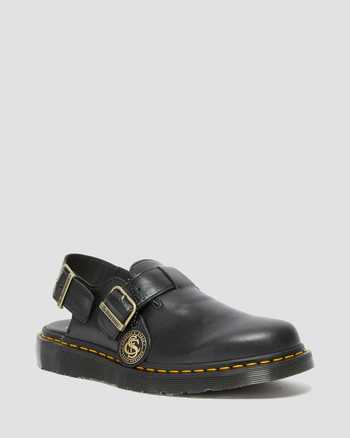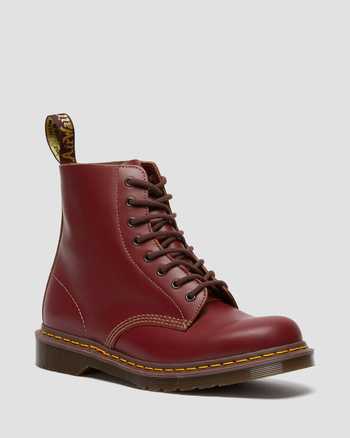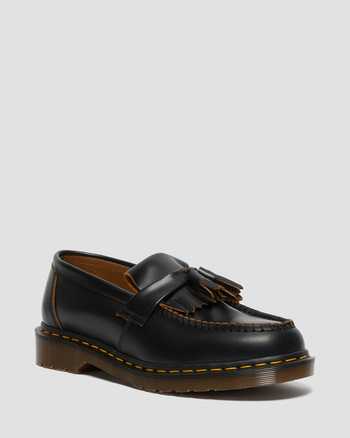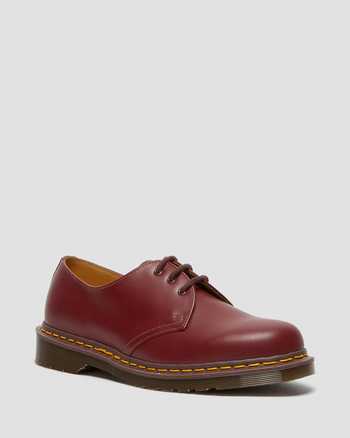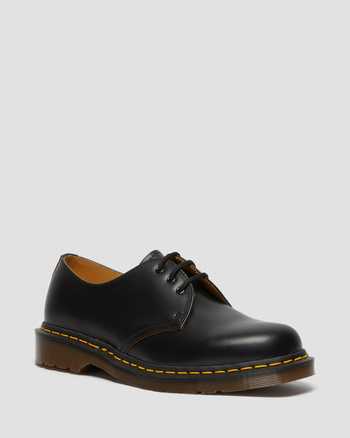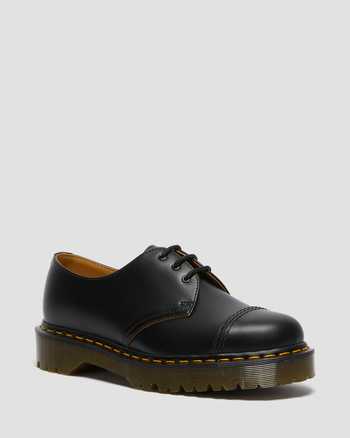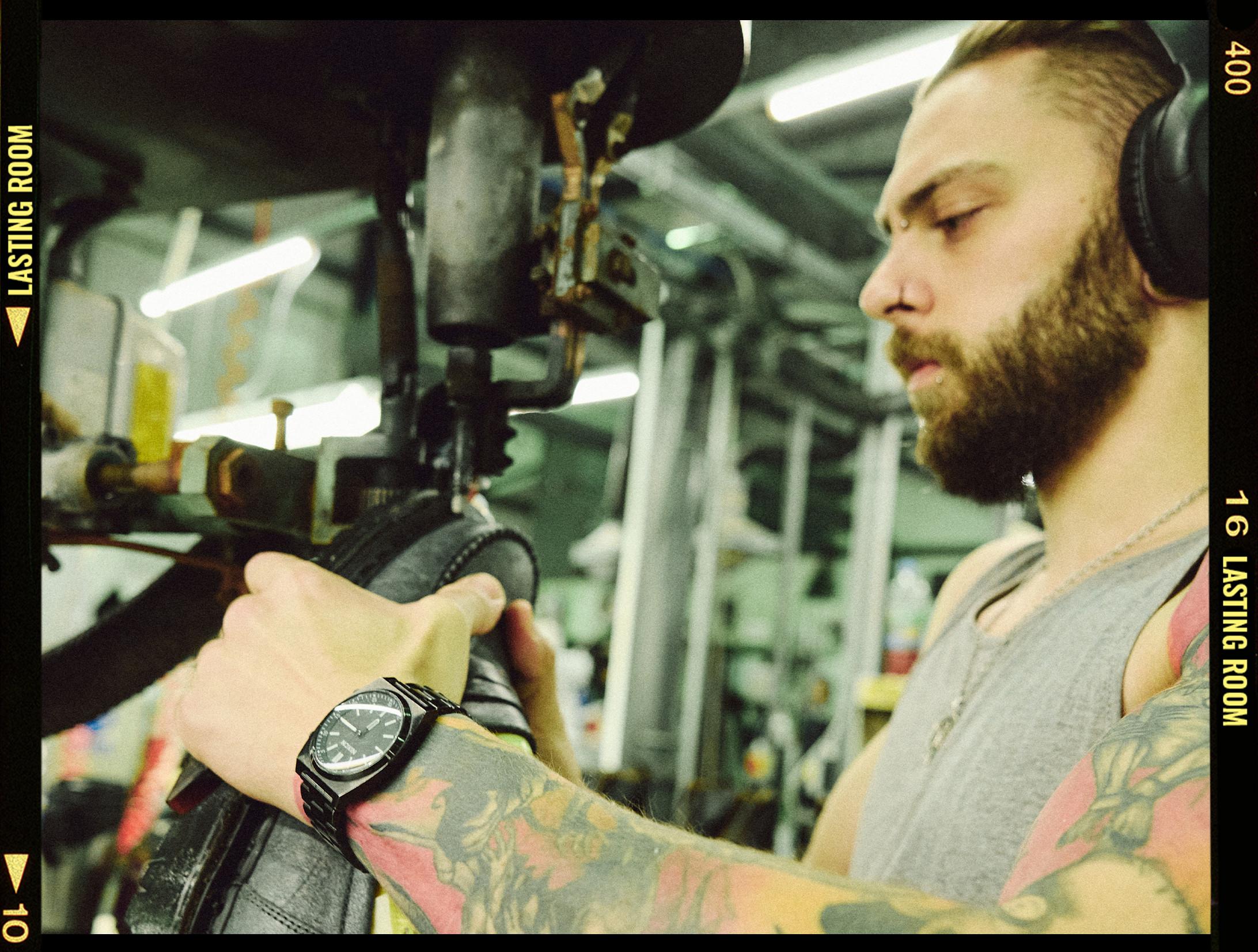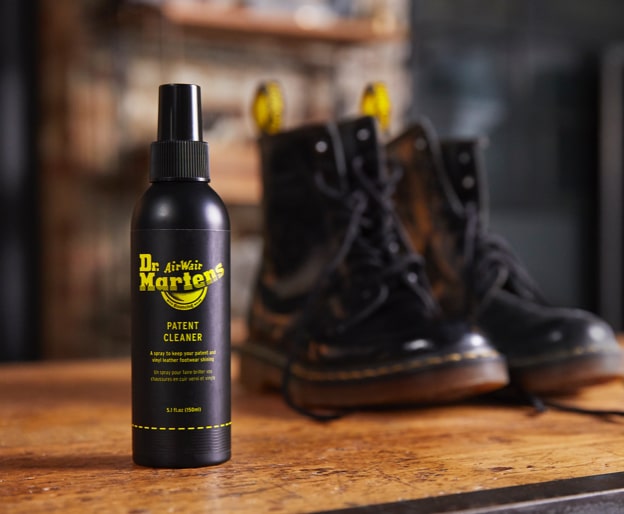MADE IN ENGLAND
DEDICATED TO CRAFT
Distilled, refined and elevated. Expert craftsmanship that speaks for itself. Our signature silhouettes-recreated and reimagined, decade after decade, in the Northamptonshire factory where it all began.
MADE IN ENGLAND
DEDICATED TO CRAFT
Distilled, refined and elevated. Expert craftsmanship that speaks for itself. Our signature silhouettes-recreated and reimagined, decade after decade, in the Northamptonshire factory where it all began.
SHOP MADE IN ENGLAND
BACKSTAGE AT THE FACTORY
We spent the day with our team in Wollaston to learn more about how the Dr. Martens 1460 boot is built. The factory floor in Wollaston is divided into 4 rooms: each performs a crucial part of the boot and shoe-making process and is run by our team of meticulous experts.
STAGE 1: THE CLICKING ROOM
In the Clicking Room, leather is inspected for imperfections and cut with razor-sharp cookie cutters and hydraulic presses. Each 1460 boot requires 7 sections of leather to form the upper, including the quarters, back strap, tongue and vamp. In other words: everything above the sole. A machine with a powerful rotating blade thins the leather to prepare it for stitching in a process known as skiving. This is also where the leather is embossed with logos and other identifying features using hot metal and gold foil.
STAGE 2: THE CLOSING ROOM
In the Closing Room, the leather pieces are stitched together on a series of sewing machines — each with a unique function. The further down the line the boot travels, the more complex each device becomes. The most important of all these is the Puritan machine. With a needle movement patented in the 1890s, this triple stitch gives our 1460 boot its renowned resilience and durability. With the sections stitched together, the boot is punched with eyelets, and the toe puff is added using a hot press. Things start to take shape in the Lasting Room, where the leather is pulled tight around the last and begins to form the shape of our unmistakable 1460 boot.
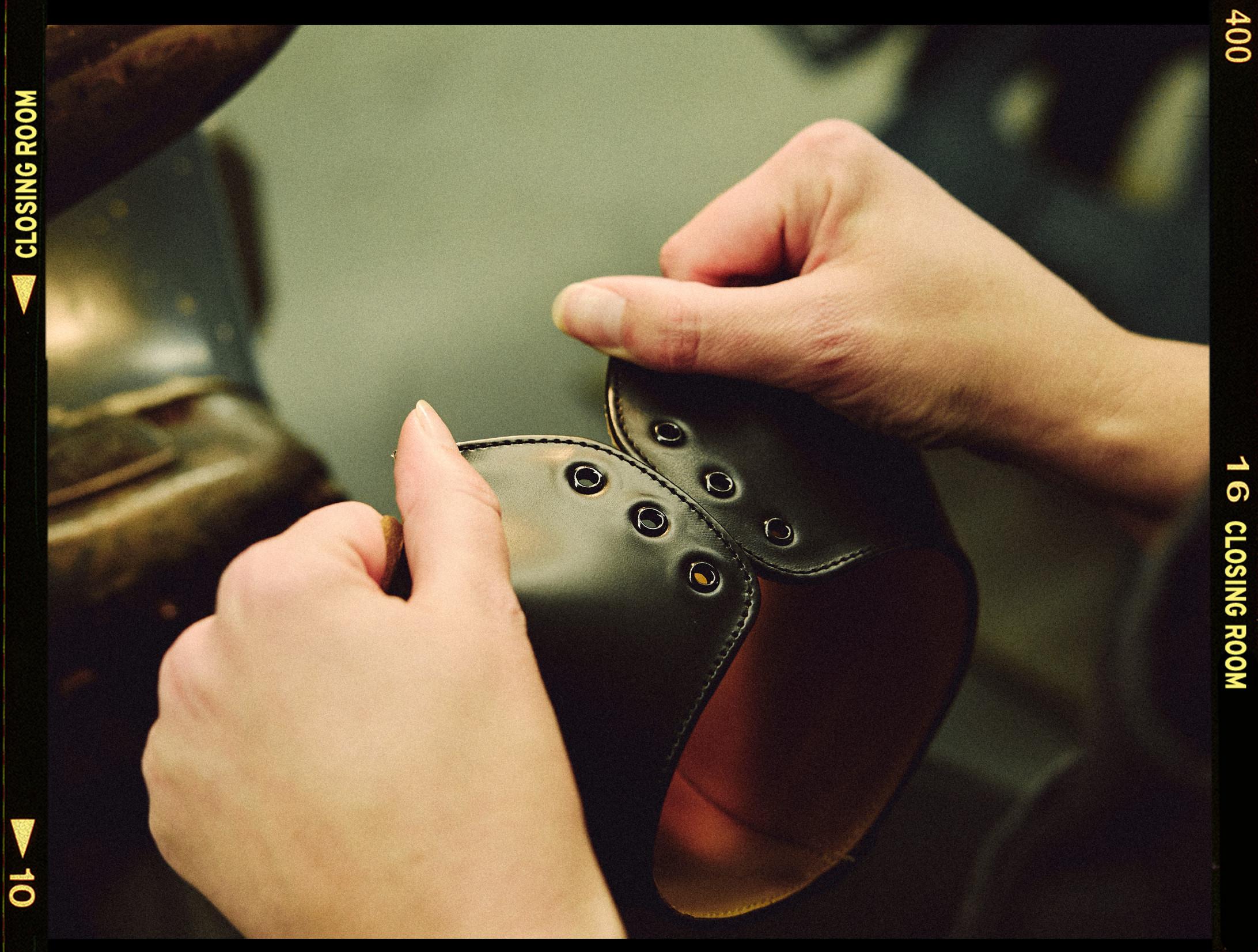

STAGE 2: THE CLOSING ROOM
In the Closing Room, the leather pieces are stitched together on a series of sewing machines — each with a unique function. The further down the line the boot travels, the more complex each device becomes. The most important of all these is the Puritan machine. With a needle movement patented in the 1890s, this triple stitch gives our 1460 boot its renowned resilience and durability. With the sections stitched together, the boot is punched with eyelets, and the toe puff is added using a hot press. Things start to take shape in the Lasting Room, where the leather is pulled tight around the last and begins to form the shape of our unmistakable 1460 boot.
STAGE 3: THE LASTING ROOM
Once the boot is moulded around the last, the process becomes uniquely DM’s. The excess leather is removed, and the upper is stitched to a PVC welt with our instantly recognisable DM’s yellow thread. The wax-coated nylon thread is punched through the welt, the leather and the insole. The PVC soles are moulded and partially fixed to the boot — then melted using red-hot blades and pressurised rollers and squeezed together by hand. As the blade burns its way between the PVC welt and the sole, the two are fused together, forming one piece of PVC and trapping a cushion of air inside to form our famous bouncing sole. The edges are trimmed for uniformity and to maintain our trademark grooved edges.
STAGE 4: THE SHOE ROOM
The final part of the process happens in the Shoe Room: the boots and shoes are inspected, cleaned, laced, fitted with socks and tags and boxed — ready to be broken in.
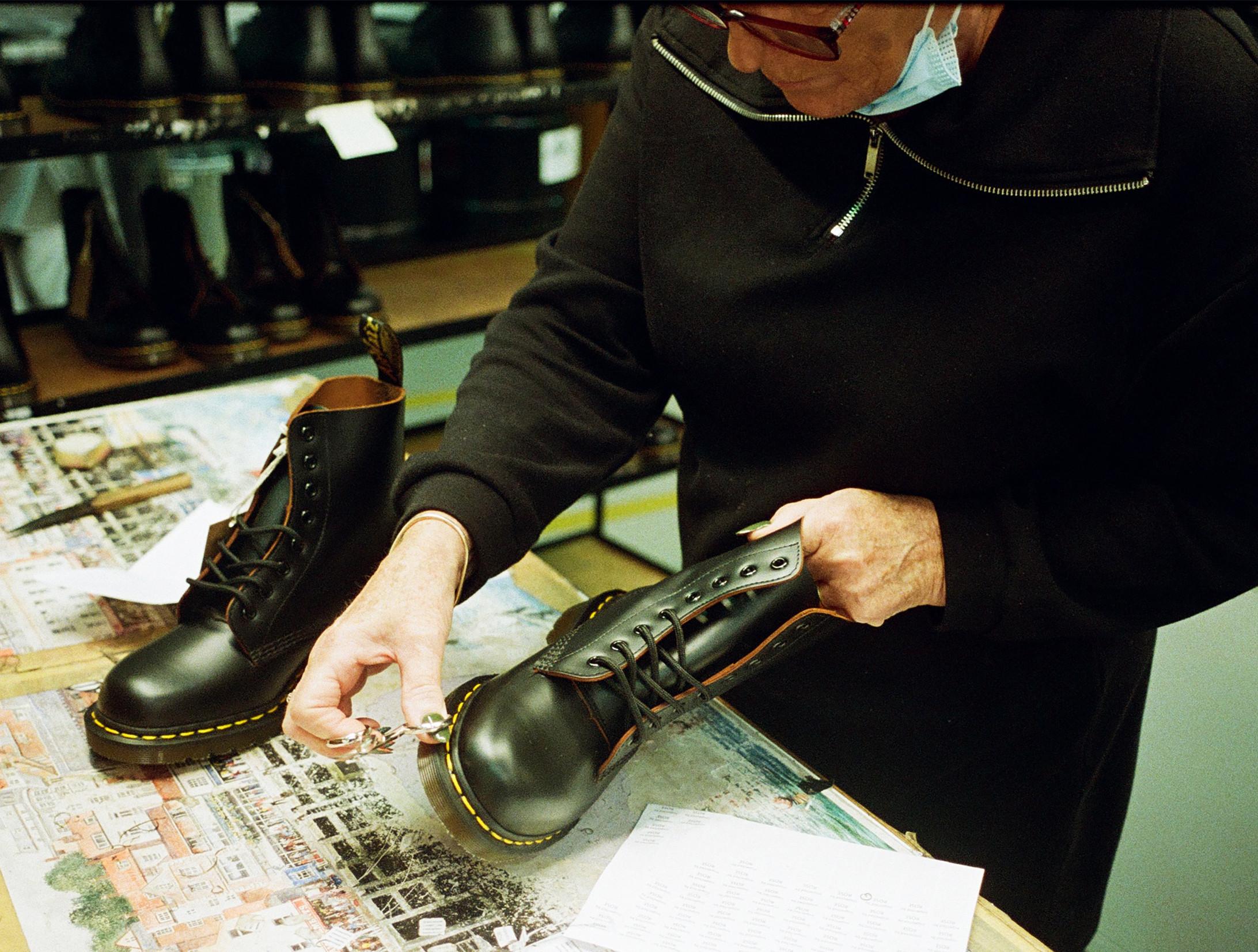

STAGE 4: THE SHOE ROOM
The final part of the process happens in the Shoe Room: the boots and shoes are inspected, cleaned, laced, fitted with socks and tags and boxed — ready to be broken in.

HANDCRAFTING: A UNIVERSAL CONNECTOR
By working with clay material that contains thousands of years of generational significance. Bisila translates and trangresses cultural divides.




Our Dubbin Wax rejuvenates waxed and oiled leathers, and adds a water-resistant layer of protection. Here the Boot Doctor shows you how to use it.

Create a layer of protection against scuffs and other wear and tear. Our Ultra Protector Spray can be used on leather, suede, nylon or canvas.

A bit of sprucing up will keep them looking fresh. Learn how to restore your suede shoes and boots to their former glory.





